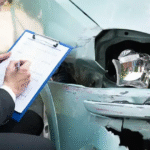In the world of aviation, keeping aircraft, pilots, and the industry safe is key. Chris Proudlove, with over 30 years of experience, leads in aviation insurance. He guides clients through the complex world of aviation insurance at Global Aerospace.
Global Aerospace has been a leader since 1924. Chris Proudlove leads the company, offering top-notch insurance for aviation and aerospace. They serve everyone from commercial airlines to private plane owners.
Chris and his team at Global Aerospace tackle complex issues like hull and liability coverage. They work hard to understand and reduce risks. This has made them leaders in aviation insurance, recognized as one of the “Top 10 Most Influential People in Insurance, 2024.”
Key Takeaways
- Comprehensive aviation insurance coverage is essential for safeguarding aircraft, pilots, and the broader industry.
- Global Aerospace, a pioneering aviation insurance provider, offers tailored solutions to meet the diverse needs of clients, from commercial airlines to private aircraft owners.
- Chris Proudlove, a seasoned expert with over 30 years of experience, leads Global Aerospace’s team in navigating the intricacies of aviation insurance, including hull and liability coverage, agreed values, and the impact of pilot age.
- Global Aerospace’s dedication to risk mitigation and innovative mindset have earned them recognition as one of the “Top 10 Most Influential People in Insurance, 2024.”
- With their deep industry expertise and commitment to providing comprehensive solutions, Global Aerospace and Chris Proudlove are at the forefront of the evolving aviation insurance market.
Understanding Aviation Insurance: A Comprehensive Overview
Pilots and aircraft owners have two main options for aviation insurance: hull and liability coverage. It’s key to know these policies well to protect your aircraft and reduce financial risks.
Types of Insurance: Hull and Liability Coverage
Hull insurance is tied to an “agreed value” set by the owner and insurer. This value is the most the insurer will pay if the aircraft is a total loss. If repair costs hit 90% of the agreed value, the aircraft might be seen as a total loss. The insurer will then pay the owner.
Liability insurance covers risks of hurting others. Policy limits depend on the pilot’s skills and the owner’s need for protection. Some pilots choose not to have hull insurance, but this is risky if an accident happens. It’s important to think about your skills and finances before deciding.
Insuring Your Aircraft: Navigating Agreed Values and Premiums
Keeping an eye on your aircraft’s agreed value is key. If it’s too low, you could face big costs if there’s an accident. The premium for your policy also depends on the aircraft’s type, age, and your flying experience and risk level.
Dealing with aviation insurance can seem tough, but knowing the basics helps you make smart choices. This way, you can protect your assets while flying.
“Insuring your aircraft is not just about protecting your investment, but also safeguarding your liability in the event of an accident or incident.”
aviation insurance: Safeguarding Your Assets in the Skies

As a pilot, having aviation insurance is key to protect your assets if an accident happens. The costs of claims for passenger injuries or fatalities can be huge, threatening your savings or other valuable assets. Insurers look at the aircraft type, passenger count, and your pilot age to set liability coverage and premiums.
Older pilots often face higher risks with passengers, and the chance of injury goes up with age. This means higher possible payouts. If you can’t get enough liability coverage or premiums go up too much, you might have to stop flying with passengers or switch to simpler aircraft. Not having liability coverage can be very risky for your family, so think carefully before making this choice.
| Coverage Type | Purpose | Typical Limits |
|---|---|---|
| Liability Coverage | Protects against claims for passenger injury or death | $100,000 to $1 million per passenger |
| Hull Coverage | Covers damage to the aircraft | Agreed value of the aircraft |
Keeping enough aviation insurance is smart for managing financial risk and a big responsibility to your family and passengers. Reviewing your policy limits and thinking about possible settlement claims helps you make smart choices. This way, you can protect your assets while flying.
“The consequences of going ‘bare’ on liability coverage can be dire for a pilot’s family, so great care must be taken when making this decision.”
Aging Pilots and Aviation Insurance: Challenges and Solutions

The average age of pilots flying for fun is getting higher. This brings new challenges when trying to get affordable insurance for flying. Even though older pilots might be less likely to have accidents, if they do, the injuries can be worse. This means insurance costs can go up.
Impact of Pilot Age on Insurance Premiums
Older pilots might not be as sharp as younger ones, even with the same flying experience, says the Aircraft Owners and Pilots Association (AOPA). This view can make insurance companies think older pilots are riskier. So, they might charge more for insurance.
Strategies for Older Pilots to Secure Favorable Coverage
But, there’s good news. Two new insurance companies are coming into the market. They plan to use better data to set insurance rates. Older pilots can also take steps to get better insurance deals. For example, flying more in the type of plane they want to use and working with an instructor to show they’re still good at flying. Keeping up with flying and fixing any issues can help older pilots get through the insurance challenges.
| Factors Affecting Older Pilots’ Insurance Premiums | Strategies for Older Pilots to Secure Favorable Coverage |
|---|---|
|
|
By understanding the challenges and using smart strategies, aging pilots can find ways to get the insurance they need.
The Aviation Insurance Market: Key Players and Trends
The aviation insurance market is a specialized field with a few key players in the U.S. Most clients use brokers to get quotes because insurers want policies bought through an intermediary. Global Aerospace, a company over a century old, leads in new trends.
Emerging Technologies and the Future of Aviation Insurance
Global Aerospace has a special team for new aviation tech like drones, eVTOL aircraft, and autonomous tech. They work with clients and leaders to keep up with changes. This means they need to be flexible and innovative for the future of flying.
They are now offering drone insurance and solutions for the eVTOL market. With big goals for sustainability and fast changes, they aim to give full, custom solutions to aviation clients.
“Global Aerospace actively collaborates with clients and industry leaders to stay ahead of the curve, recognizing the need for adaptability and innovation to support the future of flight.”
The aviation insurance market needs nimble, adaptable ways to match fast tech advances and global aerospace changes. Leading insurers focus on collaboration, innovation, and value-added services. This helps them tackle emerging trends and challenges for aviation clients.
Also Read: What Are The Benefits Of Affordable Medical Insurance?
Conclusion
Aviation insurance is key for those who own and run aircraft. It shields their assets and helps manage the risks of flying. As flying technology and sustainability issues change, insurers must keep up and be creative to help their clients.
Companies like Global Aerospace use their deep knowledge and teamwork to offer insurance solutions that fit specific needs. They work with partners and clients to help the future of flying. This includes expert guidance, managing risks, and keeping the skies safe for everyone.
Aircraft owners and operators should talk to their insurance providers to get the right coverage and protection. This way, they can keep their valuable assets safe while flying.
The aviation world is always changing, so the need for good aviation insurance will keep growing. With collaboration, innovation, and a focus on being green, the industry can overcome challenges. By working with reliable insurers, aircraft owners and operators can rest easy knowing their investments are protected. They can also keep flying safely and reliably.
FAQs
Q: What is aviation insurance and how does it relate to the aerospace industry?
A: Aviation insurance is a specialized form of insurance designed to cover risks associated with the operation of aircraft. It is crucial in the aerospace industry as it provides protection against accidents, damage to aircraft, and liabilities arising from third-party claims.
Q: What types of coverage options are available under aircraft insurance?
A: Aircraft insurance typically includes several coverage options such as hull insurance, liability insurance, and passenger insurance. Each option protects against different risks, making it essential for operators in commercial aviation to choose the right combination for their needs.
Q: How can I request a quote for aviation insurance solutions?
A: To request a quote for aviation insurance solutions, you can contact an insurance agency or carrier that specializes in aviation coverage. They will guide you through the application process and help determine the best coverage options for your specific requirements.
Q: What factors do insurance carriers consider when underwriting commercial aircraft insurance?
A: Insurance carriers consider several factors when underwriting commercial aircraft insurance, including the type of aircraft, its usage, the experience of the pilot, maintenance records, and the overall safety record of the operator in the aviation industry.
Q: Are there specific aviation insurance products designed for jet insurance?
A: Yes, there are specific aviation insurance products tailored for jet insurance. These products address the unique risks associated with operating jets, including higher liability coverage limits and specialized hull coverage.
Q: How does third-party liability work in aviation insurance?
A: Third-party liability in aviation insurance covers the legal responsibilities of the insured in the event of accidents that cause injury or damage to individuals or property not associated with the insured aircraft. This coverage is crucial for operators in the commercial aviation sector.
Q: What should I do if I have questions about my aviation insurance policy?
A: If you have questions about your aviation insurance policy, you should contact your insurance agent or agency directly. They are the best resource for providing expert advice and clarifying any terms or coverage options available to you.
Q: Can I renew my aviation insurance policy online?
A: Many insurance carriers offer the option to renew aviation insurance policies online. You can usually log into your account on the carrier’s website or contact them directly to facilitate the renewal process.
Q: What are some common risks covered by commercial aviation insurance policies?
A: Commercial aviation insurance policies often cover risks such as accidents, theft of the aircraft, damage during landing or takeoff, and third-party liability. Understanding these risks helps operators ensure they have adequate aviation coverage.
Q: How can I contact you for more information about aviation insurance solutions?
A: To get more information about aviation insurance solutions, you can contact us today through our website or customer service line. Our experts are ready to assist you with your insurance needs and provide you with the best coverage options available.




